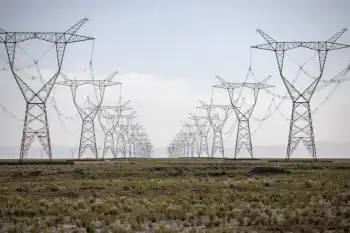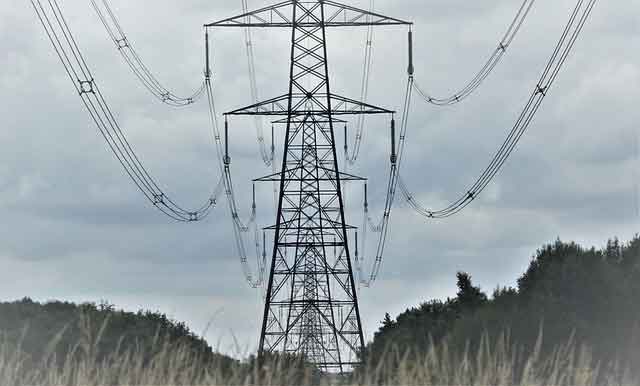FTER the lights went out in much of the Northeast and Great Lakes region on Aug. 14, traders bid up the shares of companies that were working on high-tech ways to improve power generation and to keep power flowing.
Shares of companies like FuelCell Energy, American Superconductor and Intermagnetics General jumped by more than 20 percent within a day of the power failure.
Some of the stocks have fallen back a bit, but others rose even further after blackouts on the Atlantic Seaboard caused by Hurricane Isabel.
The stocks are risky, but a few companies, including Intermagnetics General, are already profitable. Some analysts and money managers say other companies seeking ways to make transmission networks more efficient or reduce dependence on them will become moneymakers by the end of the decade. Investors who are willing to hold speculative stocks for the long haul may want to consider some of them, several analysts say.
"These are longer-duration growth companies, so if people want value instead of growth, they shouldn't be buying them," said Robin Batchelor, the London-based director of Merrill Lynch's energy funds and the manager of the Merrill Lynch New Energy Technology fund. "But this sector isn't a flash in the pan."
Many of these stocks peaked in 2000 on the strength of the technology boom. They got another boost from power shortages in California in 2001 but then fell back. Shares of FuelCell Energy, for example, now at $TK.TK after a recent surge, are still trading at a small fraction of their peak of $48.12 on Sept. 20, 2000.
"When these stocks are topical, they do very well, but when investor attention shifts to other topics, these stocks revert back," said Andrew Bradford, an analyst in Calgary, Alberta, for Raymond James Financial. "They are all highly speculative because most of them do not generate any cash flow or even a means of generating cash flow."
Often, shares of these relatively small companies are owned by a handful of specialty funds, by technophiles and by traders who take advantage of their high volatility to aim for short-term profits. Short-sellers also see plenty of opportunity in this sector at times.
The companies can be divided into three subsectors, said Sanjay Shrestha, an analyst in New York for First Albany.
First, there are the so-called distributed generation companies, which provide primary and backup power generation to give homes, offices, hospitals and other electricity users some independence from the power grid. Companies like FuelCell Energy and the Capstone Turbine Corporation in Chatsworth, Calif., fall into that category.
Second, there are the "superconductivity" companies, which are developing technologies that may replace the traditional copper and aluminum wires of the grid with high-capacity wires, which can retain more power during the passage from generator to user. American Superconductor and Intermagnetics General are two such companies.
Finally, there are companies with technology to help protect equipment and data that can be damaged or destroyed in the vital seconds after an electrical grid is disrupted and before backup generators take over. Such companies include Active Power and American Power Conversion.
Because many companies in the overall sector are generally years away from reporting profits, a price-to-earnings ratio is a meaningless tool for comparison. Chris Kwan, an analyst in New York for TD Securities, said he would recommend buying a stock in the sector only under certain conditions. "The companies have to have a viable focus, a strong technology, solid distribution partners and the cash to get them through to the commercial development stage," he said.
Many analysts say they believe that FuelCell Energy meets these criteria. It produces fuel cell technology for stationary power generators used by schools, hospitals and businesses. The company has $4.10 a share of cash, Mr. Shrestha said. Caterpillar markets its systems.
Although many analysts say the company is not likely to be profitable for several years, some call it a solid long-term investment. Still, many of those analysts would wait for the stock's price to fall before buying.
"The recommendation here is to wait for a pullback, but this is a very good long-term play," Mr. Shrestha said.
Mr. Batchelor is a fan of American Superconductor, which produces superconducting wire for eventual use by electrical utilities.
Recently, it won a contract to supply wire to the Long Island Power Authority, and the Navy is interested in using its technology to generate power more efficiently in some of its ships, Mr. Batchelor said.
DAVID KURZMAN, an analyst in New York for H. C. Wainwright, is bullish on Intermagnetics General, in part because it is profitable. In the last fiscal year, the company generated net earnings of $14.9 million on sales of $147 million.
The company receives most of its revenue from superconducting magnets used in magnetic resonance imaging machines at hospitals. Intermagnetics is beginning to use its superconducting technology to improve electrical power generation.
Mr. Kurzman said he expected earnings to grow 15 percent a year over the next two to three years.
Related News

British Columbia Fuels Up for the Future with $900 Million Hydrogen Project
VANCOUVER - British Columbia is taking a significant step towards a cleaner future with a brand new $900 million project. This initiative, spearheaded by hydrogen company HTEC and supported by the Canadian Infrastructure Bank and the B.C. government, aims to establish a comprehensive hydrogen network across the province. This network will encompass both hydrogen production plants and fueling stations, marking a major leap in developing hydrogen infrastructure in B.C.
The project, dubbed "H2 Gateway," boasts several key components. At its core lies the construction of three brand new electrolysis hydrogen production plants. These facilities will be strategically located in Burnaby,…





